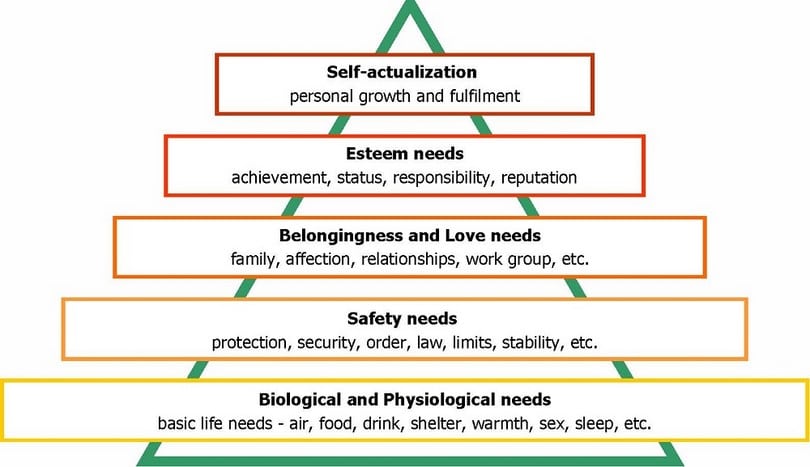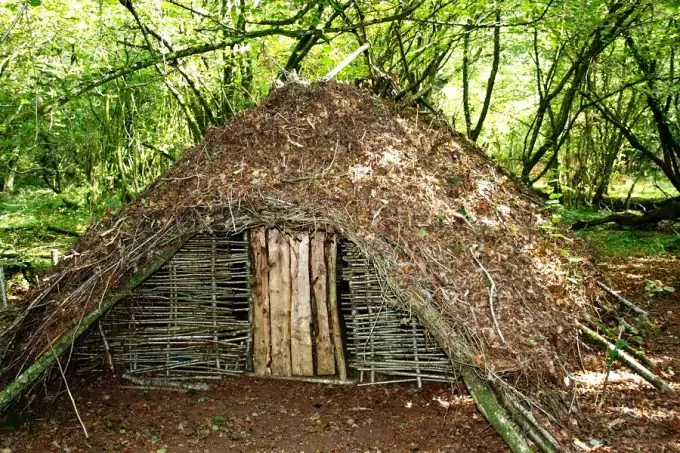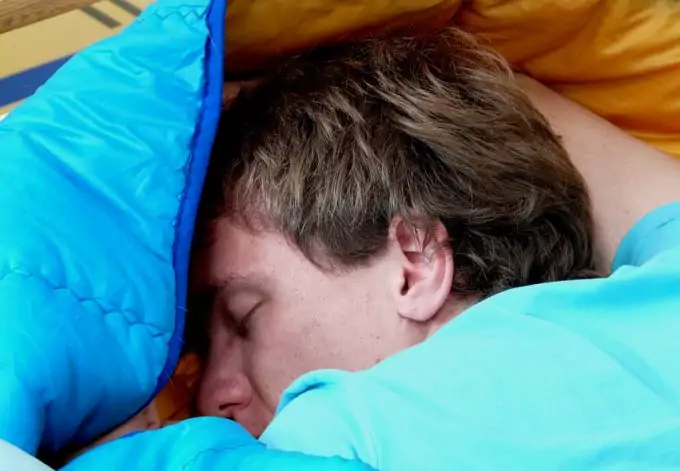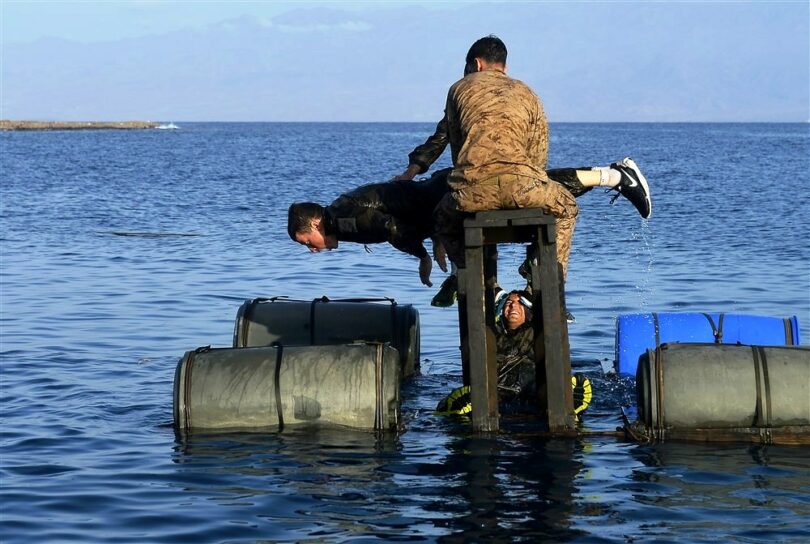It is known that there are several conditions for the human body to survive. Have you ever wondered how long you can live without oxygen, food or water, without warmth or sleep? We will give answers to these, and many other, questions. There is a difference between survival needs and the desire to thrive. Thriving and growing is a consequence of and follows the basic survival. As long as the basic needs are met, the human body enjoys comfort and growth.
[the_ad_placement id=”in-text-1-type-r”]In certain situations you have to put precedence of your basic needs before your basic comfort and thriving. For example, if you experience an earthquake of 8 Richter, you won’t be looking for your bedtime novel, but an immediate way out of the building or the endangered area. Your life is on the line and your basic needs take top priority for that moment.

We’ll explore further this field and talk more about these basic human survival needs in more detail.
Oxygen, atmospheric pressure, and water
The top of the list is reserved for the oxygen. Breathing is our most immediate need. How long can a human survive without oxygen? Some athletes can live without oxygen for up to 6-7 minutes. A normal person – no more than 4-5 minutes. As we breathe, oxygen reaches every cell and organs in our body and oxygenates the bloodstream.
Without enough oxygen, the first organ that suffers the most is the brain. Without oxygen for more than 15 minutes the brain damages are so severe that a person can’t recover afterwards. This is called cerebral hypoxia and is irreversible. If after 15 minutes the body is supplied with oxygen, the other organs may be able to revive, but the person will be ‘brain dead’.
There may be other reasons for your body to have insufficient amount of oxygen in the bloodstream. Usually these are medical reasons, like a stroke and a cardiac arrest. If a person is anemic s/he doesn’t have enough oxygen absorbed in the bloodstream and his or her organs may suffer permanent damage with time (it may take a few decades).
It is noteworthy to mention that the human body, on average, needs certain atmospheric pressure for optimal body functions. This is one of the reasons why a human (or as a matter of fact, any creature) can’t survive more than a day or two above 8000 meter above sea level. There may still be oxygen there but the body can’t optimize the use of it.
It is speculated that Nepalese people are more capable of surviving longer in such altitudes due to a DNA change. Their blood has fewer red blood cells, and contrary to logic, this is the reason why they extract and absorb the oxygen better. Hence, Nepalese are considered anemic on sea level, but they are in fact not.
Next on the list is water. This is the second most important element for the body to survive. On average, the lifespan of a human being without water can be estimated from 3 to 4 days. There are a few factors though that can lengthen or shorten this period. Temperature for example can be a major factor. The warmer it is, the quicker you lose fluids from your body, since you sweat more. It is calculated that starting from 80 Degrees Fahrenheit a man can survive for up to 10 days.
For every 5 degrees more, the lifespan shortens with a whole day. Your chances of survival are also affected by your physical exertion. The more you’re moving and the more effort you put in your activity, the faster you lose water from your bloodstream.
You need to know that a human loses 2-3% of water, this means up to 20% of thickening of the blood. The blood loses its volume and becomes thicker. It moves slower through the body and it takes more time to reach some more distant areas like the fingers. As a result you would have cold fingers. Not only that but as some capillaries are thinner, blood may not be able to go through them and can obstruct passages to vital organs. The brain’s capillaries are very thin and blood can’t get to the brain if it’s too thick. This leads to loss of focus and even unconsciousness, in extreme cases.
You also need to know what water does to the body (when the basic needs are met) so you know which functions are impaired by dehydration. Water helps flush the toxins and impurities from the body (through urine and sweat); forms saliva which is needed for digestion; helps the body maintain normal temperature and avoid overheating; helps the digestion process, which requires some amount of fluids to process the nutrients; keeps the joints lubricated and improves motor functions; aids the production of hormones (in the brain) and neurotransmitters; provides the basic element for each cell to survive and grow.
This quick overview gives really a general idea of the vital processes that are supported by the presence of water in the body. During dehydration each of these processes suffer and eventually shuts down with time. You can learn more about dehydration in our article on how long can you live without food and water.
Food and shelter
The next two needs can be inter-changeable and switch their place of relevance depending on whether one is satisfied or not. So, these two needs are food and shelter. Usually a man won’t be looking for shelter if s/he is deadly hungry, and yet, protection from the elements goes hand in hand with immediate survival. What if a hailstorm hits, or you’re in heavy snowstorm? You won’t be looking for food in those situations even if you’re hungry.

So, shelter is the next important need for a man to survive. In this category is also the need for warmth. You won’t survive more than a few days in sub-zero temperatures even if you had food to eat, but had no shelter or protection. There is a certain balance when it comes to temperature that keeps the body in a normal state.
Body temperature, which fluctuates below or above these degrees, puts the body into survival mode. A stronger deviation leads to death. So, the best body temperature is 98.7 degrees Fahrenheit. With 7 degrees below you lose consciousness. 7 degrees further down and the body can’t regulate the internal heat any more. At 82 there’s total muscle breakdown and eventually death at 79.
On the other hand though, if your body temperature rises to 107 degrees, you’ll suffer neurological damages. More than 111 degrees causes the brain to overheat and this eventually leads to death. All of these scenarios can be avoided with proper shelter from cold or heat. It is estimated the cold conditions can reduce the body fluids (and lead to dehydration) just as quickly as hot weather conditions.

As we talked about internal body temperature we need to address also the outside temperature and how human bodies survive in too low or too high degrees. It is known that the body can adapt to certain changes but it need to happen gradually. For example, 140 degrees F (60 degrees Celsius) in combination to extremely humid conditions can lead to death after 10 minutes of exposure. This condition is called hyperthermia.
As for cold weather conditions, humans are usually well equipped with clothes and -29 C can be tolerable with proper clothing. But there’s rarely just stale cold air. Usually winters are accompanied by wind. As we add the ‘wind chill factor’ the above temperature can be felt like -45 just with a light breeze of wind. Add a bit more to it (25 mph) and it feels like -66. That’s when exposed skin suffers frostbite within minutes.
[the_ad_placement id=”in-text-2-type-r”]Apsley Cherry-Garrard tells her story how in -47 F (-43C) she left her mittens to grab hold of a rope (with her bare hands). She did her job within several minutes, and only several hours later as she was already inside, in a warm room, did she see several blisters showing on her fingers. This is superficial frostbite and damages only the skin layer. It isn’t dangerous since the damaged skin is shed and new skin grows. But it is a good example of how easily the body can be hurt by low temperatures.
On the other hand, if you are for example in cold water (around freezing level) you may have the chance of survival for no more than 30 minutes. As cold impairs the proper blood circulation, there’s not enough oxygen to reach your brain. This causes sleepiness and can lead even quicker to death and hypothermia.
As you can see, having a shelter where to protect your entire body from the elements is of absolute importance. So, you should learn about building one whenever you don’t have construction materials around. For this, check out our piece on how to build a survival shelter.
As we talked above, food is also part of the basic survival needs. Usually, an average man can survive more than a month without any food (sometimes even longer than that). This survival period depends on a few things – fat reserves, muscle mass and the condition of the internal organs.
During starvation, the process goes as follows:
- In the first 3 days the body uses only the fat reserves. Depending on that this period may be longer or shorter.
- Then, the body enters into a ketone stage, when it uses the liver’s fat reserves, which are called ketones (fatty acids). Not only does the body use the liver’s reserves but it may also turn to the intestines. This is one of the reasons why it is hard to feed someone without actually causing more problems. The intestinal walls and muscles are damaged by the long starvation period and are still not repaired to be able to function properly. This process lasts for about 2 weeks. It depends again on the reserves of the individual.
- The last stage is when the body eats the muscles. It doesn’t really matter which type of muscle it will consume, but it eventually leads to damages of the heart muscle. As a result the heart weakens and can’t pump the blood any more. Then it just shuts down. Literally the body eats itself to prolong life at the expense of the organism itself.
It is often neglected but an individual can die during starvation not because of it, but because of toxicity. Usually the liver is the organ that processes toxins. In order for it to flush them it needs nutrients to break down and neutralize these toxins. If the individual goes through a starvation process with no nutrients entering the body, the liver has no way of processing and breaking down the toxins and eventually it shuts down. This quickly leads to a painful death.
We have to point out though, that most people who suffer these conditions don’t die directly from starvation, but from infections. The body’s natural defenses are broken down. The body can’t support its own defense systems if it has no fuel (nutrients) to do it. Usually the individual suffers abdominal edema or swelling of the limbs. This means gathering fluids in certain areas of the body (predominantly the abdomen and limbs). As a result infectious diseases attack the body and eventually cause death.
To avoid such horrifying ways to die, you should always have a survival kit with you – these are equipped with food for at least 72 hours and you can always rationalize the portions to have food for longer. We have a great guide to the best survival food kits with reviews and ideas on how to improve your kit.
The importance of appropriate sleep cycle
The next most basic need is sleep. In the past it wasn’t considered as a basic need and its vital importance was neglected. Only in recent times, thanks to scientific research and published data, do we know that sleep is in fact as vital as all the above needs. The longer the individual is deprived of proper sleep, the worse his or her condition becomes. Combined with lack of one of the above needs, sleep deprivation can eventually be fatal. For one thing, it lowers the immune system’s defenses and can cause a range of infections and inflammations throughout the organism.
Within the first 24 hours the individual will suffer headaches. After 72 hours, one can experience difficulties in spatial orientation and loss of memory. Cognitive abilities suffer even more after 96 hours. As we go further, after 144 hours self-control is impaired and hallucinations occur.
As it is impossible to test how far a human organism can live without sleep, we can only assume. But one thing is certain, the body needs to repair and while we sleep the body rebuilds damaged DNA. It leaves the survival stage so it can enter into repair mode. Without it, damages, which had already occurred and are not fixed, can continue to build up in the system and this can lead to illnesses and infections, some of which if unattended can be fatal.

There have been some laboratory experiments with mice, which show that sleep deprivation does lead to death. There has also been the case with Randy Gardner who decided to try and stay awake for as long as he can. His experiment lasted about 11 days, until he succumbed to hallucinations and he stopped the experiment, as he might have died if he didn’t.
In another case, a Chinese man also tried to stay awake to watch the European cup – every single game of it. He stayed awake for 11 days but eventually died. It must be pointed out though that he also was drinking alcohol and was smoking which may have contributed to his organism’s breakdown.
[the_ad_placement id=”in-text-3-type-r”]In laboratory tests with rats, scientists discovered that as the sleep deprivation furthers in time, the mice metabolism was gradually speeding up. This condition is called hyper metabolism and is linked to sleep deprivation. During this condition the body’s metabolic rates are very high even during rest. This burns out all the body’s calories and fat reserves for a very short time, leaving it exposed to infections (as the immune system weakens).
You can read more about a healthy sleep cycle in our article called ‘how much sleep do I need?’. You’ll learn about sleep and how to make sure your sleep is of high-quality.
Do you know your limits?
Besides these five basic needs there is one more that can be addressed. For example, how much radiation can we sustain (in case of a nuclear reactor explosion)? It is estimated that 5-6 Sv (Sieverts) of radiation (within several minutes) will destroy too many of your cells, and too quickly for them to be able to regenerate in time, to preserve the body.
As a comparison, workers in the Fukushima nuclear reactor sustained radiation of about 0.4 to 1 Sv during the course of one hour, as they worked after the reactors’ damage. They are still alive today but live with highly increased risk of developing cancer within the next years.
On the other hand, an interesting fact is that a human being who is exposed to the natural radiation sources (uranium in the soil, sun’s and cosmic’s radiation and gamma rays, etc.) and supposedly, for the sake of example, we assume that humanity eradicated all sickness and cancer, can live no more than 4000 years. The body will have sustained gradual damage and the DNA will no longer be able to repair with time, hence death would occur. This means that immortality can’t be achieved.
All of the situations above, in which the human body is pushed to the limits, are examples of how durable and yet how fragile we are. Yet, as long as you are aware of your body’s limits you can have a little more control over the situations you encounter in your life. Don’t push your limits too hard or you may cross the survival limits. In our modern times there are many people who do extreme sports and test their limits, trying to push them further and further. Many of them die as a result; others realize that their bodies aren’t invincible and respect nature’s harshness.






First of all, thank you for such a wonderful article. You gave a new perspective to Maslow’s hierarchy chart. I specifically liked the part where you explained the intricate relationship between food and shelter. Hope to get more interesting articles. Cheers!
We are glad we could help.
Sleeping is everything, especially non-REM sleep. REM is still quite important, and there will still be cycles of NREM and REM sleep at that point in the morning. There will be more REM than in the early part of the night, but it won’t be exclusively REM.
Thank you for sharing this. People often neglect the importance of having enough sleep. When people are trapped in the woods and can’t find their way back home, they tend to get panic and look endlessly for the way out even they are already deadly tired. Sleeping makes your muscles relax. It also refuels your brain for a smarter thinking. I am not saying you should sleep all day long in the woods, just have a decent 60-90 minutes nap.
Power napping is a great way to quickly recharge one’s body and it is advisable during a long hike, although I would prefer hiking straight to the camp site and rest longer there than staying in one part of the woods to get in a quick nap.
You are correct about the sleep cycle but both REM and Non-REM sleep have equal importance. Non-REM sleep allows us to absorb the learnings we had the previous day while REM sleep allows the body to recuperate and repair itself.